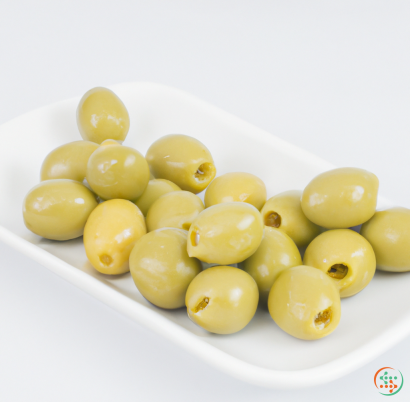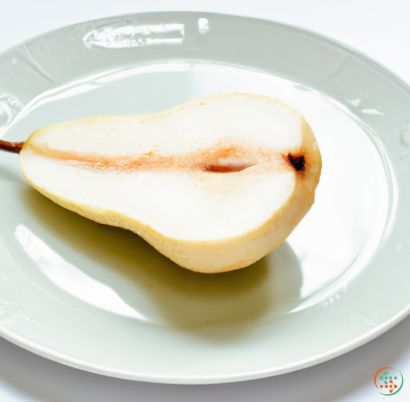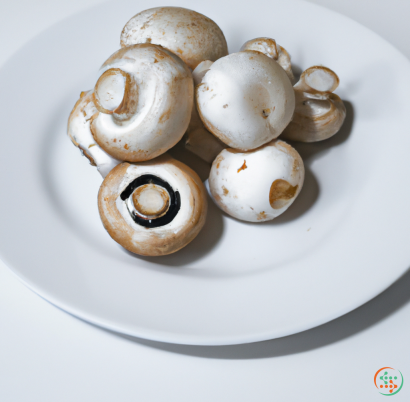Grapefruit
A grapefruit is an incredibly unique and versatile fruit that has been around for centuries. Despite its unusual name, the grapefruit is actually not related to grapes at all. It's a large citrus fruit with rough, bumpy skin that can range in color from yellow to deep pink or reddish-orange. Known for its sweet and tangy flavor and juicy texture, grapefruits have been enjoyed as both a delicious snack and a nutritious addition to any meal.
Grapefruits belong to the citrus family and are closely related to oranges, lemons, limes, and tangerines. They're native to tropical and sub-tropical regions, with the majority of them grown in the United States, Mexico, Brazil, and Israel. Although grapefruits can be found year-round, the peak season for grapefruits is from late winter and early spring.
A grapefruit is a very large citrus fruit, usually weighing between four to six inches in diameter, and can range in color from yellow to deep pink or reddish-orange. Its skin is rough, bumpy and slightly bitter, while the flesh is juicy and sweet-tart, ranging in flavor depending on the variety and ripeness of the grapefruit. The inside of the fruit is sectioned in segments and filled with small, papery, juicy sacs filled with tart juice and some white seeds, which are completely edible.
Grapefruits are nutrient-dense, low in calories and contain numerous vitamins and minerals that are essential to a healthy diet. Free of saturated fats and cholesterol, they are a great source of potassium, a mineral that helps regulate blood pressure and heart rate, Vitamin C, a powerful antioxidant that aids in repairing cells and protecting the body from harmful environmental agents, and dietary fiber which helps keep the body's digestive system healthy and regular. Other important vitamins and minerals that can be found in grapefruits are thiamin, folate, magnesium, and copper.
Grapefruits also have a variety of health benefits associated with them. Research suggests that consuming more grapefruit can help lower cholesterol levels, reduce the risk of stroke, and decrease the risk of certain types of cancer. Other potential health benefits include a decrease in insulin levels, which helps to reduce the risk of developing type-2 diabetes, and a reduction in inflammatory markers that can help alleviate the symptoms of arthritis and other chronic conditions.
In addition to these impressive and nutritious properties, grapefruits are also incredibly versatile and can be used in a variety of dishes. From adding them to a breakfast smoothie to utilizing them in a savory marinade or salad dressing, grapefruits can be used in countless ways. Slice them, leave them whole, mash them up or squeeze them into a refreshing glass of juice, the possibilities are truly endless. Additionally, the rind of the grapefruit makes for a wonderful addition to jams or jellies or can be used to create an even more intense flavor when cooking.
Grapefruits have been a beloved fruit for centuries, and for good reason. Not only are they a delicious and nutritious addition to any meal, but they are also extremely versatile and can be used in a variety of dishes. So, if you ever wondered what all the fuss is about, jump on the “grapefruit train” and explore all the amazing health benefits, flavors, and possibilities that this incredible fruit offers.
The Journey of a Grapefruit From Farm to Table
Most people think that grapefruits just appear in stores, but they don’t really think about the journey they take from farm to plate. However, every fruit that you savor has undergone a complex, tedious and fascinating journey before it hits your dinner plate. So, how is a grapefruit created and what are the steps involved in getting it to your plate?
Grapefruits are a citrus fruit which are grown in warm, subtropical climates. In the United States, the Florida region produces the majority of domestic grapefruits, and Texas, California, Arizona and Hawaii also produce significant amounts. Commercial grapefruit cultivation requires careful and diligent care from planting to harvest and delivery.
Planting and Growing
Grapefruit production begins with the selection of trees for one or several citrus varieties. Different regions have different grapefruit trees, depending on the climate and soil type. The best soil for grapefruit trees is well drained and has a slightly acidic pH ranging from 5.5 to 6.5. The trees are planted in the spring in tightly spaced rows and watered regularly. Some farmers also use fertilizer to ensure that the trees get the right amount of nutrition.
Once the initial care is taken, the next step is to protect the trees by shading them, pruning them and keeping pests away. Part of this care includes protecting the grapefruits against heat, frost and animals. Netting can be used to keep out larger animals and various pesticides are also employed to keep insect populations in check.
In the fall and winter, grapefruits undergo a slow-down in growth as temperatures drop and nutrients in the soil levels become low. The trees require extra attention and fertilization during this time to prevent nutrient deficiencies from forming. In the summer, however, the trees grow rapidly and are kept well-watered to prevent wilting. This is critical for producing large, succulent grapefruits.
Harvesting
When the trees are ready, harvesting begins. The fruit is plucked off the tree with hands or machine harvesting equipment. Care is taken to not bruise the fruit while picking it, as the marks can quickly lead to further deterioration of the fruit.
After harvesting, the grapefruits are sorted and graded according to size, shape and color. The process of sorting and grading is highly automated and done to ensure only the best grapefruits are sold in markets.
Packaging and Shipping
Once sorting and grading is complete, the grapefruits are packed. The packing process includes wrapping the fruits in paper and placing them in boxes or bags. Another step in the packaging process includes ensuring that the grapefruits are maintained in a cool environment, either in air-conditioned rooms or in refrigerated trucks.This helps to extend the shelf life of the grapefruits.
The next step is to ship the grapefruits to markets. Generally, they are shipped via air freight or truck and arrive at their destination within days. In some cases, it might take weeks depending on the distance and the season.
Marketing
Once the grapefruits arrive in their markets, they are sold to stores, restaurants and farmers markets. The process of marketing begins with creating packaging that is attractive to consumers. This can include labels, tags and other type of advertising. The next step is to set prices that are competitive and attractive to buyers. This is done by researching the prices of various stores in the area and analyzing the demand for the fruit.
Finally, the grapefruits are stocked onto shelves for buyers to pick up. In some cases, the fruits might be packaged and sold in mixed boxes or baskets.
Eating
Grapefruits are generally eaten fresh, although some are juiced or used in cooking or baking. Generally, people like to add sugar, honey or other sweeteners to counter the tartness of the fruit. They are also a popular breakfast item and are sometimes used to make smoothies or consumed with yogurt or cereal.
Grapefruits can also be served as a dessert, with segments added to fruit salads or with whipped cream, ice cream or other sweet toppings.
Conclusion
Grapefruits are a delicious and healthy fruit that have taken a complex journey from farm to plate. The trees are planted and then cared for with shading, pruning and pest control, before being harvested and shipped to markets. Once in the markets, the fruits are carefully sorted and graded before being sold to consumers.
Whether you start your day with a grapefruit or have it for dessert, it’s sure to be a tasty experience. The next time you have some, take a moment to think about the journey it took to get to your plate.
| Vitamin A | 0.058 mg | |
| Beta-Carotene | 0.686 mg | |
| Alpha-Carotene | 0.003 mg | |
| Vitamin E | 0.13 mg | |
| Vitamin C | 0.0312 grams | |
| Vitamin B1 | 0.04 mg | |
| Vitamin B2 | 0.03 mg | |
| Vitamin B3 | 0.2 mg | |
| Vitamin B4 | 0.0077 grams | |
| Vitamin B5 | 0.26 mg | |
| Vitamin B6 | 0.05 mg | |
| Vitamin B9 | 0.013 mg |
| Calcium | 0.022 grams |
Daily Value 1.3 g
|
| Iron | 0.08 mg |
Daily Value 0.018 g
|
| Magnesium | 0.009 grams |
Daily Value 0.4 g
|
| Phosphorus | 0.018 grams |
Daily Value 1.25 g
|
| Potassium | 0.135 grams |
Daily Value 4.7 g
|
| Zinc | 0.07 mg |
Daily Value 0.011 g
|
| Copper | 0.03 mg |
Daily Value 0.9 mg
|
| Manganese | 0.02 mg |
Daily Value 0.0023 g
|
| Selenium | 0.1 ug |
Daily Value 0.055 mg
|
| Tryptophan | 0.008 grams | |
| Threonine | 0.013 grams | |
| Isoleucine | 0.008 grams | |
| Leucine | 0.015 grams | |
| Lysine | 0.019 grams | |
| Methionine | 0.007 grams | |
| Cystine | 0.008 grams | |
| Phenylalanine | 0.013 grams | |
| Tyrosine | 0.008 grams | |
| Valine | 0.015 grams | |
| Arginine | 0.087 grams | |
| Histidine | 0.008 grams | |
| Alanine | 0.024 grams | |
| Aspartic Acid | 0.138 grams | |
| Glutamic Acid | 0.197 grams | |
| Glycine | 0.015 grams | |
| Proline | 0.063 grams | |
| Serine | 0.028 grams |
| Glucose | 1.61 grams |
|
| Fructose | 1.77 grams |
|
| Sucrose | 3.51 grams |
|
| Total Sugars | 6.9 grams |
per 100g
|
| Palmitic acid (16:0) | 0.02 grams |
|
| Total Saturated fatty acids: | 0.02 g | |
| Oleic acid (18:1) | 0.02 grams |
|
| Total Monounsaturated fatty acids: | 0.02 g | |
| Linolenic acid (18:3) | 0.01 grams |
|
| Linoleic acid (18:2) | 0.03 grams |
|
| Total Polyunsaturated fatty acids: | 0.04 g | |







